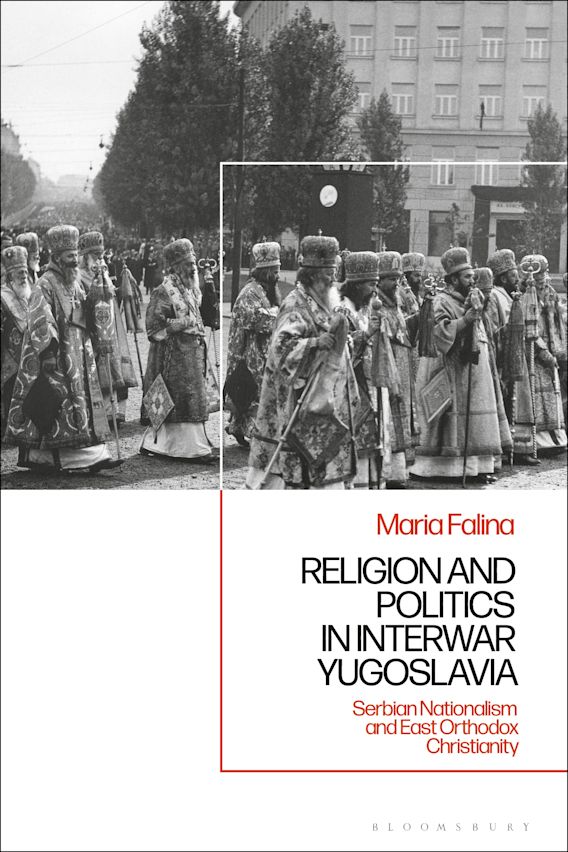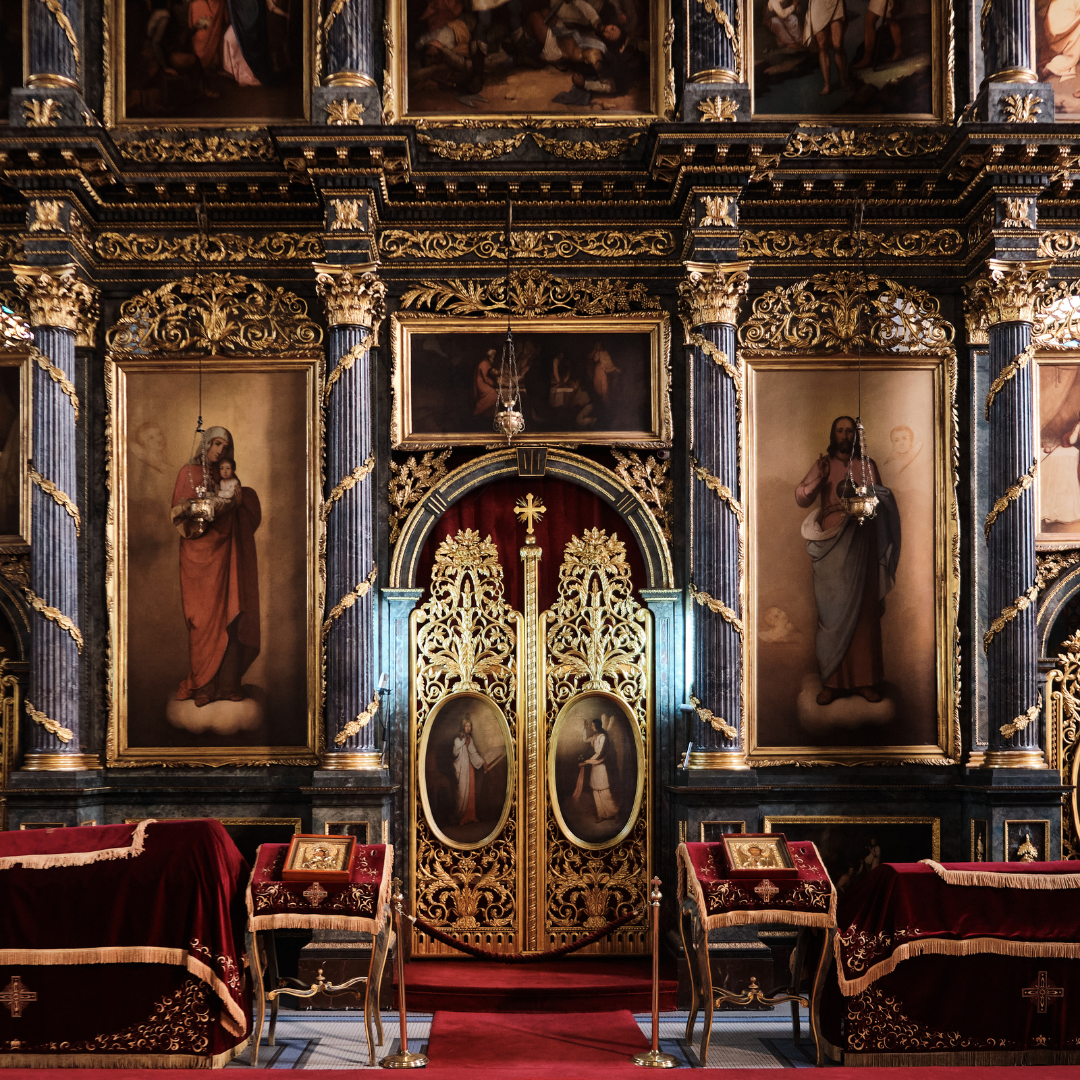Orthodoxy and nationalism in interwar Yugoslavia

Published by: Bloomsbury Academic

In Religion and Politics in Interwar Yugoslavia, Maria Falina studies the bond between Serbian Nationalism and East Orthodox Christianity. Such an endeavour may seem redundant, as the strong connection between Serbian nationalism and Orthodoxy appears natural and inevitable. This assumption is apparent in popular claims that religion constitutes the single most important element of division in the former Yugoslavia. It is also well-integrated in academic research on nationalism. One could even argue that it constitutes one of the few elements where Balkan studies have made a conceptual contribution to more generalizing research. Scholars like Anthony B. Smith typically list Serbian nationalism as one of the prime examples to demonstrate the importance of religious concepts and resources in modern nationalism. Contemporary developments in the region appear to demonstrate the continuing force of religion in national mobilization. In the last couple of years, the Serbian Orthodox Church has established itself as a crucial political actor in Montenegro, mobilizing large crowds to protest against what are presented as anti-religious and anti-Serbian measures by the Montenegrin nationalist political elite. However, this natural law does not always apply, even in the Serbian case. The Serbian Orthodox Church in Kosovo, for example, is an important resource for Serbian national claims but does not itself constitute a central mobilizing actor in Serb-Albanian ethnonationalist polarization. The same applies in the case of Macedonia, where the Serbian Orthodox Church recently recognized the autocephaly of the Macedonian Orthodox Church and ended a long schism on apparently nationalist grounds.
With this book, Maria Falina makes an important contribution to our thinking on religion and nationalism in the Balkans. The book shows that East Orthodox Christianity came to be at the core of one version of Serbian nationalism. One of the major strengths of the book is that it focuses the analysis on political aspects of religious thought and the way religious communities and institutions engage with secular politics. The key actors in the book are Serbian Orthodox religious thinkers in their responses to the challenges posed by modernity, Yugoslav nation- and state-building and religious competition. The book does not satisfy itself with a reconstruction of the nationalizing politics of various state institutions and how these succeeded in instrumentalizing religion for their own nationalizing purposes. Instead, it gives a voice to religious thinkers and shows how their responses to challenges posed by modernity and secular nationalism were integral to the dynamic phenomenon of modern nationalism. Religious thought is not secondary or subjugated to nationalism.
The book focuses on the interwar period. By doing so, it does justice to this relatively short and, especially for the former Yugoslavia, overlooked period by demonstrating that the establishment of a multireligious and composite state with nationalizing aspirations was a watershed moment for religious and national thought. Although the Yugoslav modernizing project was short-lived, unstable and ultimately failed, it was instrumental for the creation of the bond between Serbian nationalism and East Orthodox Christianity. The book rightfully shows that we cannot understand the particular relationship between religion and nationhood without situating these dynamic processes within the framework of the Yugoslav nationalizing state.
After the murder of King Aleksandar, the church engaged in “political Orthodoxism” as a defence against threats of religious competition, state regulation of religious life and secularization.
The book is composed of four chapters, which chronologically describe the way Serbian religious thinkers engaged with the secularising nation-state. The first chapter sets the stage and shows that Serbian Orthodox thinkers learned to speak the language of nationalism in order to safeguard the position of their church within the secularizing Serbian state. This process came to culmination during the interwar period. Chapter Two argues that the Serbian Orthodox Church welcomed the establishment of the new Yugoslav state, both because national and religious thinkers alike had paid limited attention to the question of how to reconcile religious diversity with national unity prior to the establishment of the new state and because the new Yugoslavia enabled the unification of different religious jurisdictions into one Serbian Orthodox Church. However, the new state also posed two important challenges. Yugoslavia was a multireligious nationalizing state. It did not have a state church but also did not completely separate church and state, as it expected all religious institutions to contribute to national and state unity. The subordination of religious resources to secular nationalism was a shared point of concern among all religious communities in the state. This did not translate into a shared agenda, however, because of religious competition.
The Serbian Orthodox Church continued to posit its primacy in the new Yugoslav context and vehemently opposed the Roman Catholic Church. Chapters Three and Four finally demonstrate how these concerns led to the bond between Serbian nationalism and Orthodoxy during the 1930s. During the first half of the decade, the Yugoslav Royal Dictatorship created opportunities for political activism by the Serbian Orthodox Church. After the murder of King Aleksandar, the church engaged in “political Orthodoxism” as a defence against threats of religious competition, state regulation of religious life and secularization. The book ends with an elaboration of svetosavlje, the Serbian Orthodox religious concept that best demonstrates the intrinsic bond between religion and nation. It also describes the key moments in the politicisation of Serbian Orthodox religious thinking, namely the church’s ardent criticism of the Yugoslav Concordat with the Vatican, the agreement with the Croatian political party and Yugoslavia’s entrance into the Tripartite Pact in 1941.
The book does not entirely convince in realizing two of its central claims. First, it argues that nationalism was the ultimately dominant response among Serbian religious thinkers to the challenges of Yugoslav modernity, but it was not the only one. The book discusses the alternative of the God Worshipper movement, which emphasized spirituality, piety and engagement in social work and posed an alternative to the national path in Serbian Orthodoxy. Considering the book’s central claim that the bond between Serbian nationalism and East Orthodox Christianity was not given, the argument would have benefitted from a more diverse picture of the dynamic intellectual interactions within the Serbian Orthodox community. Second, the author expresses the hope that the book’s argument will be informative and relatable for students of European history. This is not always the case, contradictorily because the book at times seems to have cut out the contextual background for figures and phenomena from interwar Yugoslavia, which makes it difficult for scholars not familiar with the topic to relate to the arguments made. This is particularly clear in the epilogue, which introduces some exploratory considerations on the position of the Serbian Orthodox community during the Second World War and beyond but cannot (and does not claim to) do justice to the complexity of this essential new topic. It is not clear how readers who are not familiar with Yugoslav history can relate to this epilogue.
That being said, the book contributes to our understanding of Yugoslav history and the relationship between nationhood and religion by placing religious thought at the centre of the analysis and demonstrating that the bond between East Orthodox Christianity and Serbian nationalism is not natural and inevitable, but was crystallised within the framework of the nationalizing and modernizing Yugoslav state.
Pieter Troch is professor of Southeast European History at Ghent University. He studies the dynamics of social relations and identification against backgrounds of political and socio-economic transformations in the Southeast Europe’s twentieth-century history. In 2015, his monograph Nationalism and Yugoslavia: Education, Yugoslavism and the Balkans Before World War II appeared with I.B. Tauris. He has published articles in the fields of nationalism studies, labor history and urban studies. In his ongoing research, he looks at socialist development politics in Albanian-populated parts of the former Yugoslavia through the prisms of urbanization and industrialization.
